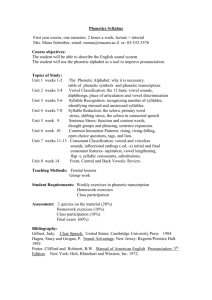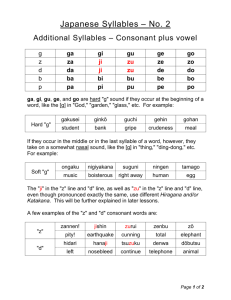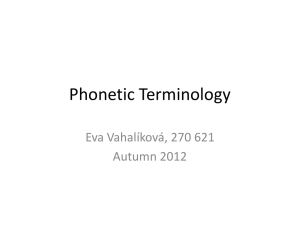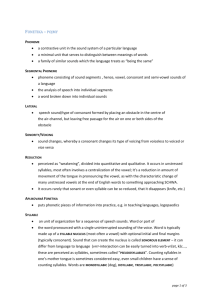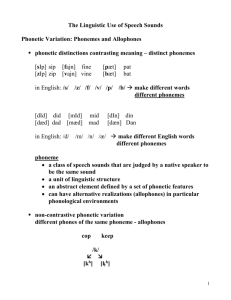Glossary of key terms
advertisement
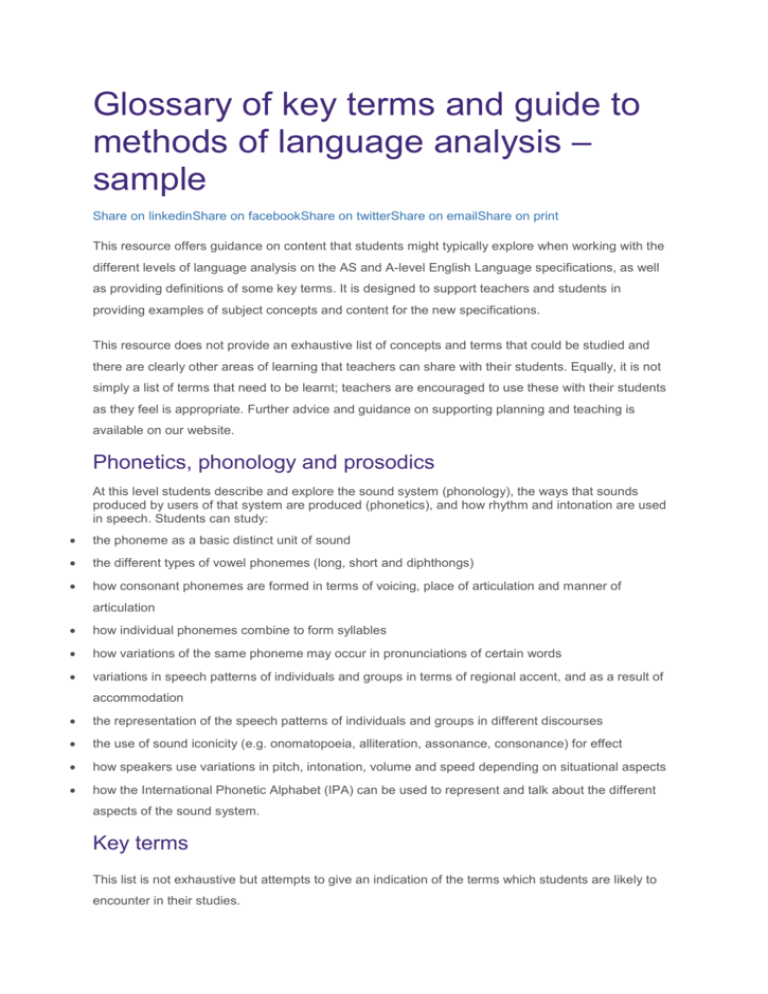
Glossary of key terms and guide to methods of language analysis – sample Share on linkedinShare on facebookShare on twitterShare on emailShare on print This resource offers guidance on content that students might typically explore when working with the different levels of language analysis on the AS and A-level English Language specifications, as well as providing definitions of some key terms. It is designed to support teachers and students in providing examples of subject concepts and content for the new specifications. This resource does not provide an exhaustive list of concepts and terms that could be studied and there are clearly other areas of learning that teachers can share with their students. Equally, it is not simply a list of terms that need to be learnt; teachers are encouraged to use these with their students as they feel is appropriate. Further advice and guidance on supporting planning and teaching is available on our website. Phonetics, phonology and prosodics At this level students describe and explore the sound system (phonology), the ways that sounds produced by users of that system are produced (phonetics), and how rhythm and intonation are used in speech. Students can study: the phoneme as a basic distinct unit of sound the different types of vowel phonemes (long, short and diphthongs) how consonant phonemes are formed in terms of voicing, place of articulation and manner of articulation how individual phonemes combine to form syllables how variations of the same phoneme may occur in pronunciations of certain words variations in speech patterns of individuals and groups in terms of regional accent, and as a result of accommodation the representation of the speech patterns of individuals and groups in different discourses the use of sound iconicity (e.g. onomatopoeia, alliteration, assonance, consonance) for effect how speakers use variations in pitch, intonation, volume and speed depending on situational aspects how the International Phonetic Alphabet (IPA) can be used to represent and talk about the different aspects of the sound system. Key terms This list is not exhaustive but attempts to give an indication of the terms which students are likely to encounter in their studies. Phoneme The basic unit of sound Diphthong A vowel sound that is the combination of two separate sounds, where a speaker glides from one to another Voicing The act of the vocal cords either vibrating (voiced) or not vibrating (unvoiced) in the production of a consonant sound Place of articulation The position in the mouth where a consonant sound is produced Manner of articulation The extent to which airflow is interrupted by parts of the mouth in the production of consonant sounds Syllable A sound unit with a vowel at its centre. Accent A regional variety of speech that differs from other regional varieties in terms of pronunciation Accommodation The ways that individuals adjust their speech patterns to match others. Sound iconicity The use of the sound system to mirror form or meaning International Phonetic Alphabet An internationally recognised system of phonetic transcription


